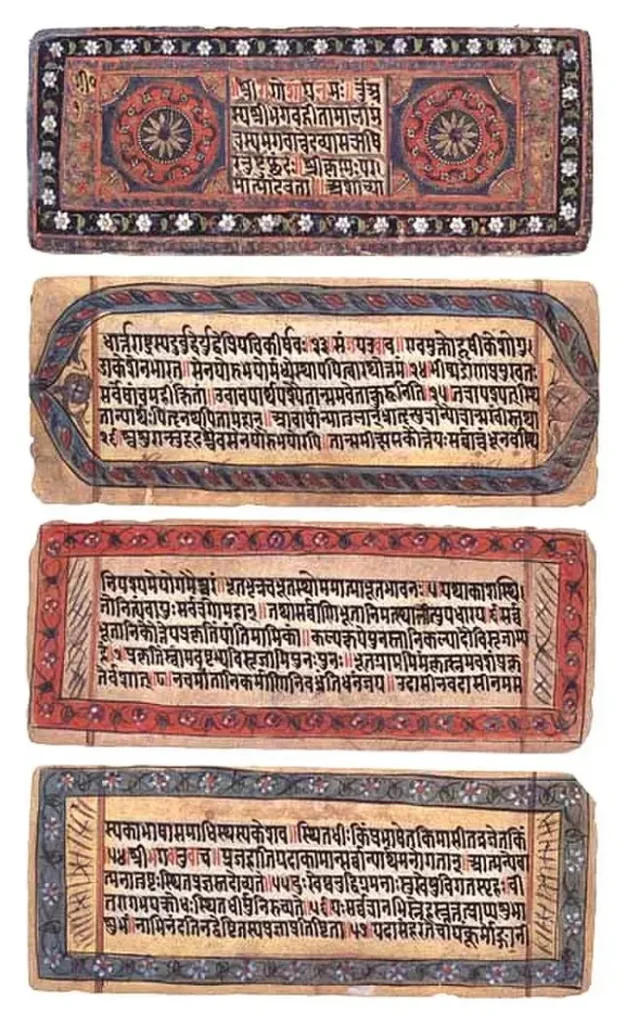Bhagavad Gita, Natyashastra now a part of UNESCO’s Memory of the World Register; PM Modi calls it ‘recognition of our rich culture’

Bhagavad Gita, Natyashastra Enter UNESCO Memory of the World Register: A Proud Moment for Indian Culture
New Delhi, April 18, 2025 — India’s ancient texts, the Bhagavad Gita and the Natyashastra, have been added to the UNESCO Memory of the World Register. This global list aims to protect and preserve documentary heritage with universal value. The recognition marks a proud moment for India, highlighting its rich spiritual and artistic traditions.
Prime Minister Narendra Modi expressed joy over the development. He called it a “recognition of our rich culture and timeless wisdom.” He also noted that these texts continue to inspire not just Indians, but people around the world.
What Is the UNESCO Memory of the World Register?
UNESCO launched the Memory of the World Register in 1992. Its goal is to safeguard valuable documents like manuscripts, recordings, and historical texts. These documents must hold global significance. The Bhagavad Gita and Natyashastra now join other respected works such as the Magna Carta and the Diary of Anne Frank.
India now has six entries in the register. This milestone highlights the world’s growing appreciation of Indian culture and thought.
Bhagavad Gita: A Universal Guide to Life
The Bhagavad Gita is a 700-verse text from the epic Mahabharata. It features a conversation between Lord Krishna and Arjuna, a warrior prince. Through this dialogue, the Gita explores deep themes like duty, courage, and the path to self-realization.
Mahatma Gandhi once called it his “spiritual dictionary.” The Gita continues to guide people across cultures and religions. Its place in UNESCO’s list recognizes its global relevance and philosophical depth.
Natyashastra: Foundation of Indian Performing Arts
The Natyashastra, written over 2,000 years ago, is a Sanskrit treatise on drama, dance, and music. Sage Bharata is believed to be its author. The text has 36 chapters and over 6,000 verses.
It laid the foundation for Indian classical art forms such as Bharatanatyam, Kathakali, and Odissi. Many of its rules and concepts still influence Indian theater and cinema. UNESCO’s recognition of the Natyashastra honors India’s deep-rooted artistic legacy.
Reactions from Leaders and Scholars
Union Culture Minister G. Kishan Reddy welcomed the news. He said, “This is a proud moment for every Indian. The world is finally recognizing the wisdom of our ancient heritage.”
Cultural scholars also applauded the recognition. Professor Arvind Sharma, a leading Indologist, said the texts have shaped Indian thought for generations. He called the UNESCO listing a chance to study and preserve them with greater focus.
Why This Matters Globally
In a fast-paced digital world, ancient texts like these remind us of our roots. The Bhagavad Gita and Natyashastra still influence people across disciplines. Spiritual seekers, management experts, philosophers, and artists all draw from these works.
Their inclusion in the UNESCO list encourages more people to explore their teachings. It also helps preserve them for future generations.
What It Means for India
This recognition opens several doors:
- It increases global awareness of India’s cultural legacy.
- It boosts efforts to digitize and preserve ancient manuscripts.
- It strengthens cultural diplomacy, sharing Indian values worldwide.
- It supports education and tourism, especially in the fields of philosophy and performing arts.
A Cultural Achievement with Global Impact
The inclusion of these sacred texts reflects India’s growing influence on the global cultural stage. It reinforces the country’s vision of becoming a Vishwa Guru — a teacher to the world.
As Prime Minister Modi said, this recognition is more than a tribute to the past. It is a call to carry this heritage into the future and share it with the world.






